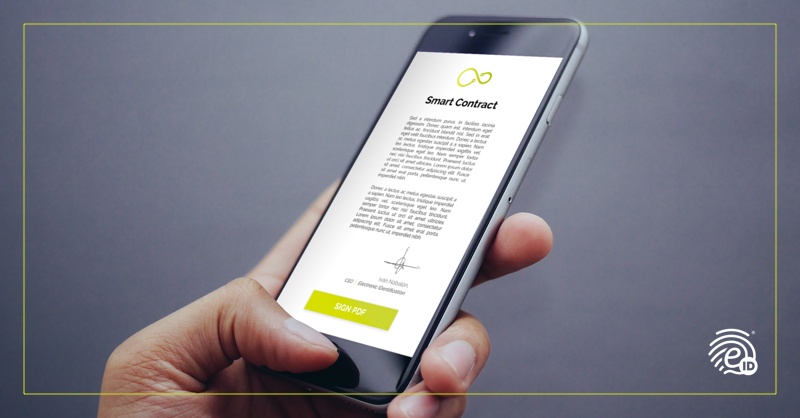In this article, we are going to develop the use case for contracts with an electronic signature. We will focus on regulation, the advantages of these contracts and their different uses.
Electronic signature and contracts: how does it work?
Contracts with electronic signatures are used to identify the signer of an electronic document, ensuring the full integrity of it in a fast and effective process.
eIDAS Regulation in eSignature
The new European Regulation No 910/2014 about Digital IDentification and Electronic Signature eIDAS, came into effect on July 1, 2016 throughout the European Union.
This regulation has set specific rules for trust services. Specifically, it defines 3 types of electronic signatures:
- Simple Electronic Signature: We will obtain a code by email or mobile phone without using an identity document. It is used for low-risk identification operations (up to €999) because there is no evidence on who is signing the document.
- Advanced electronic signature: This signature is valid for any type of transaction, at any risk level. Its use is allowed with identifications that require a level of security equivalent to face-to-face according to AML5 regulations. This Directive focuses on allowing advanced electronic signature when user IDentification has happened remotely through video.
- Qualified electronic signature: This is an advanced electronic signature with an extra level of guarantee, which allows unique equivalence to handwritten signature and is automatically recognized by all European Union member states (governments and public administrations).
Access all information about electronic signature, eIDAS regulation and its relationship with the new AML5 Directive.
What are their advantages?
Electronic signature contracts consist of a simple digital process to improve efficiency and reduce costs in signing documents or contracts.

Contracts signed electronically take the main advantages of this technology:
- Ease of use.
- It can be used at any time, without friction.
- Omnichannel strategy, from any electronic device.
- The process becomes effective in real-time.
Don’t miss the use case on facial biometrics in payment methods.
Use cases in contracts with electronic signature
eSignature contracts are used to verify our identity in different processes, accessing apps or validating documents.
The different uses of the electronic signature are the following:
- Signing contracts online.
- Validating and accepting contracts in bank branches.
- Signing contracts through a graph in ATMs or Kiosks.
- Validation of documents at ATMs.
SignatureID, our electronic signature solution
Our solution SignatureID offers an omnichannel strategy, allowing its use both in mobile and web or face-to-face at branch offices or ATMs.
Our process ensures a high level of security (backed by eIDAS and AML5), that is carried out in real-time and in a matter of seconds.
The great advantage of SignatureID over the rest of electronic signatures available in the market is the possibility of its integration into a complete process that starts from the identification of the user and its authentication to the signing of the documents or contracts.

As an etrust service provider, our wide range of products allows an end-to-end process without friction and with a customer conversion up to 84%.
SignatureID adapts to the different signatures required, depending on the security level or procedure that must be carried out. This solution links with CAs and TSPs to improve the user experience in contracting and to be able to authenticate in multiple ways in any channel but can use the guarantees of the certification authorities in each specific country.
Contracts with electronic signature are increasingly used to expedite customer procedures. AML5 and eIDAS have incorporated certain innovations to the different types of electronic signature, allowing companies to offer an online end-to-end and friction-free onboarding to their customers.
If you want to get more information about the use cases of electronic signature contracts, click here.





